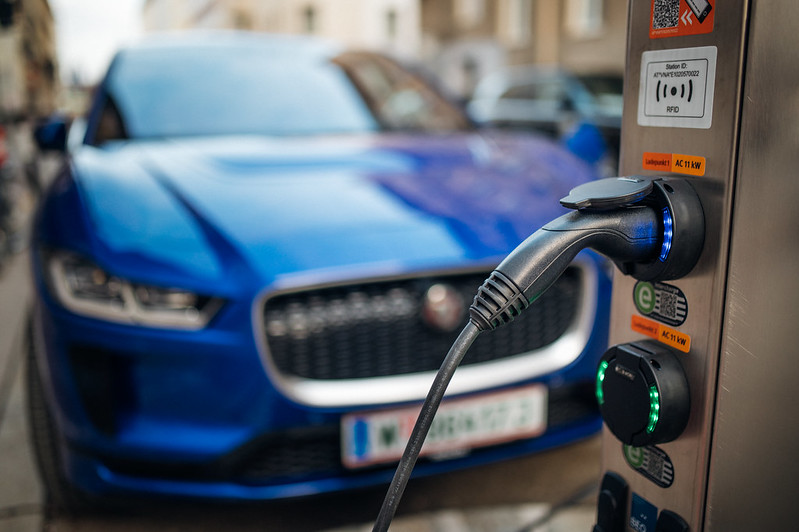
Photo by Ivan Radic licensed under CC BY 2.0. Rechargd.com is reader supported. We may collect a share of sales or other compensation from the links on this page. As an Amazon Associate, we earn from qualifying purchases.
With its rechargeable battery, one of the most commonly asked questions people ask about electric cars is why can’t they just charge themselves?
Since electric cars do not have engines, the alternator would lack its power source making an alternator ineffectual in an electric car. Electric cars do make use of regenerative braking which does put some power back into the battery but not enough to enable the car to run off its own battery power entirely.
Other technologies are being explored with electric cars such as solar power with some commercial cars available today. Charging infrastructure and its technologies will also continue to play an important role.
Why Can’t Electric Cars Charge Their Own Batteries?
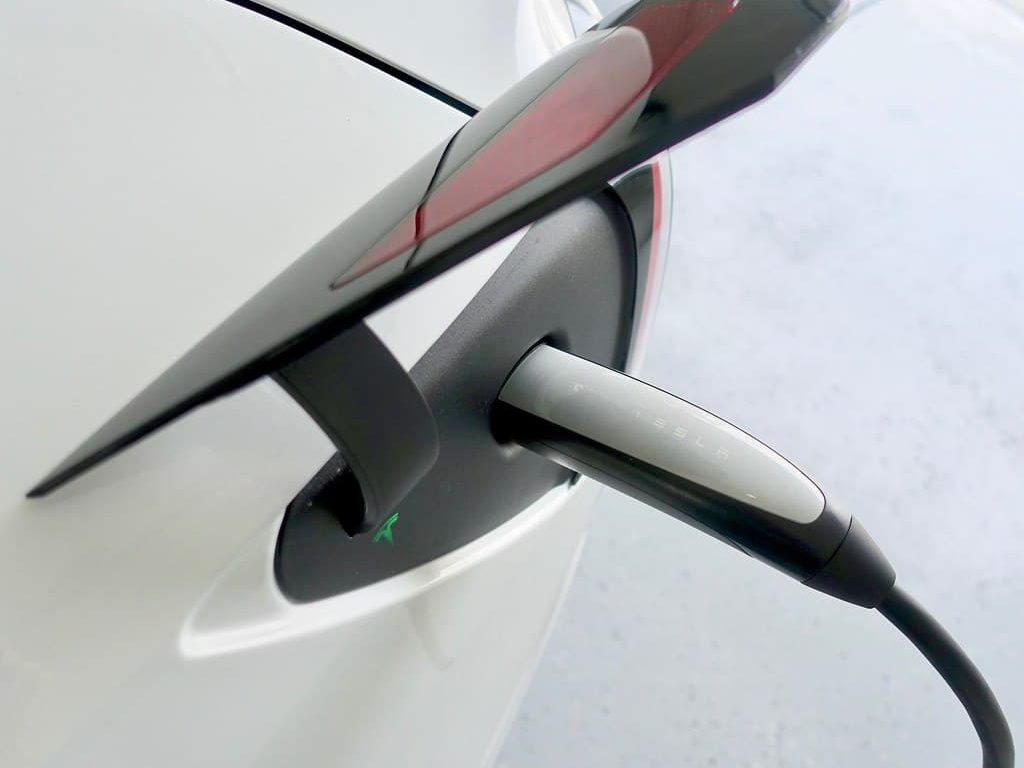
Currently, electric cars and their batteries cannot charge themselves. This is unlike ICE vehicles which do charge their own batteries, but whose batteries are much smaller and only power the electronics – not the movement of the car.
So, why is this the case? So whereas an ICE has an alternator that acts as an electrical generator converting mechanical energy into electrical energy by a current that is alternating, which feeds back into the battery charging it.
However, mechanical energy needs kinetic energy – energy generated by movement. The alternator works by a rotating magnet around a stationary armature to create that kinetic energy, similar to the sun moving around the earth. In the ICE car, the battery provides the electricity to start the combustion engineer, which then, in turn, provides mechanical energy to the alternator.
The alternator then produces electrical power which feeds back to the battery replacing what was lost. Fuel is the only energy source that can’t be reproduced through this energy conversion.
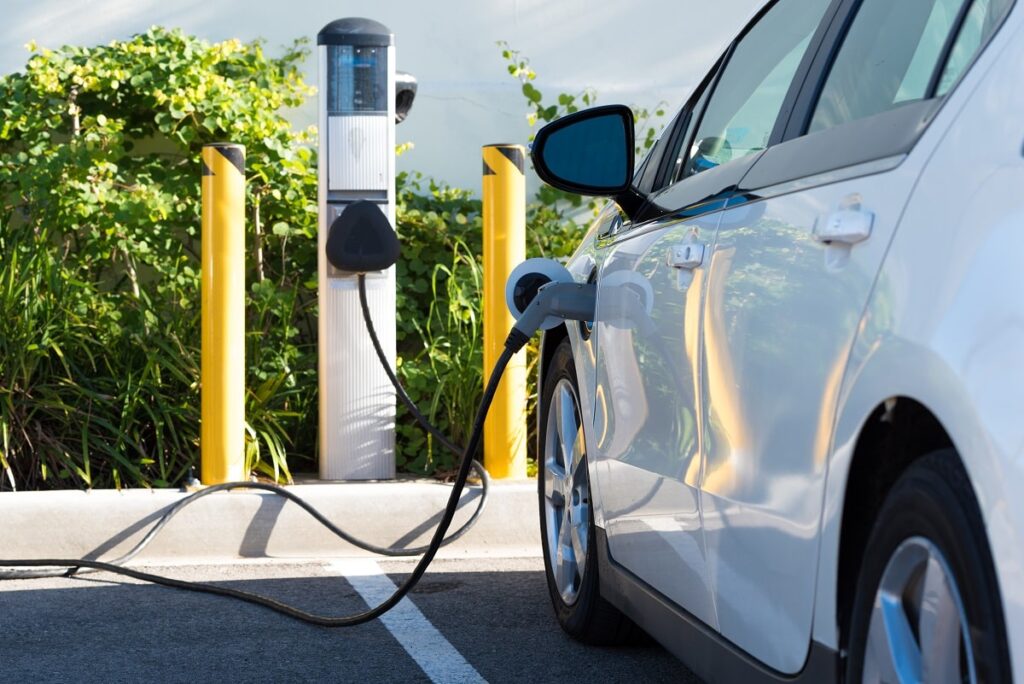
In an electric car on the other hand the energy is produced from the battery itself. As it does not have a secondary energy source, it does not work to try and use an alternator to produce more electricity.
The alternator would need electricity from the battery to produce mechanical energy which would convert back into electricity. If this was the case, it would lead to draining more energy than could be produced by the alternator and would lead to a dead car even before it got started.
So, we have established that having an alternator in an electric car does not make sense. However, are there no other options electric car manufacturers could take so that electric cars would be able to charge themselves?
Regenerative Braking Extends The Range
One of the ideas around electric cars being able to self-charge is using a secondary energy source that would be required to restore energy to the battery, which would be possible from the kinetic energy from the car moving.
This is currently being used in the form of regenerative braking but is far from enabling the electric car to run solely off its own battery without any external charging.
Regenerative braking, otherwise known as a regenerative-hydraulic hybrid braking system, works by providing two levels of braking, a generator mode, and a pure brake mode.
When the brake pedal on the car is pressed, the generator mode kicks in and the kinetic energy produced by the rotating wheels is transferred to a generator through a drivetrain.
The generator is then activated with some of the kinetic energy converted into electric energy, which is stored in the battery. In the instance that generator mode is not enough to slow down the car or stop it completely, then the system switches to pure braking mode.
Regenerative braking allows electric cars to put some of the energy back into the vehicle so the battery lasts longer.
However, it is not enough to enable the battery to completely work off itself without external charging.
It does help the electric car get more range though and is something that has been suggested by innovators that this is something that could be utilized more fully in the future.
Powering Electric Cars With Solar Energy
While regenerative braking already exists and is being used in electric cars, there have been some other suggestions and theories for other methods that could be used so that electric cars can self-charge.
One is with the use of solar panels. Now, this does seem a little out there. You may have seen camper vans with solar panels installed on the roof to power the electrics inside the vehicles but the vehicles are generally all still driven with petrol or diesel, not electric.
Solar-powered cars do exist, though. The Sion from Sono Motors is a solar-powered electric car that charges itself and gets up to 305 kilometers of range.
It’s 456 half cells which are integrated into the body of the car can add 112 kilometers on average per week of the driving range to the car’s battery with the energy generated from the sun.
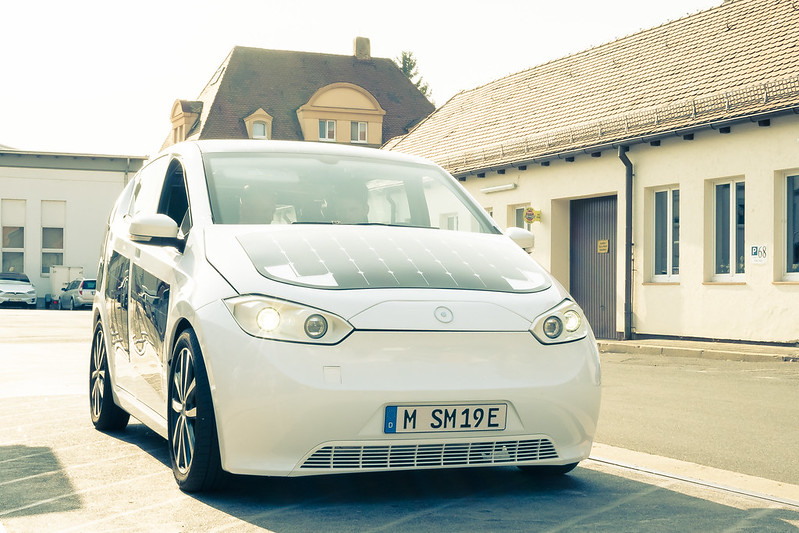
It can be recharged at any public charging station in Europe using a regular home power socket or from another Sion.
The Aptera is another solar-powered electric vehicle that requires no charging for most daily use. According to the website, it can travel up to 1,000 miles on a single charge and up to 40 miles of solar-powered driving per day.
If you are looking to blend into the background whilst driving, this may not be the car for you with its futuristic exterior which resembles something out of a sci-fi movie.
However, with environmental concerns a top priority and getting the most out of its range, it makes for a next-generation of eco-cars.
Lightyear One is another solar-powered electric car marketed as being super-efficient and having a long range. It is designed to be grid-independent with its unique technology meaning it consumes two or even three times less energy than any other electric vehicle commercially available today. It claims to have a range of 725 km with the lowest emissions and the lowest charging frequency.
Harnessing The Power Of Wind
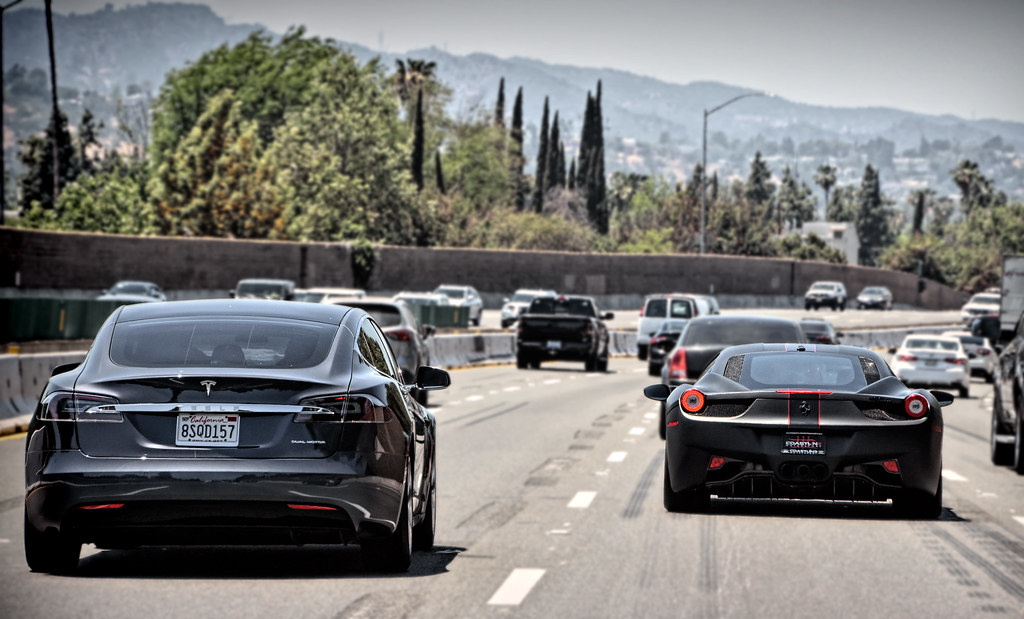
While solar panels and building on the concept of regenerative braking seem to be viable, other theories have popped up about how electric cars can be independent of external charging methods.
One of these theories is using the power of the wind. While there seem to be a plethora of academic papers discussing the viability of wind turbines to power electric cars and YouTube videos, there aren’t a lot of actual examples where this technology could be used.
There are some vehicles that have been designed to harness the power of the wind to power the electric cars but let’s just say they are not going to be practical for popping to the shops to go and get some milk. The Blackbird looks mainly like a windmill that can be driven.
The vehicle was apparently developed when physics professor Alexander Kusenko of the University of California bet Derek Muller, a YouTuber, $10,000 that a car cannot travel quicker than the wind propelling it. The Blackbird was the result of the bet, which subsequently Muller won.
Chinooks, a group of innovative engineering students from Montreal have also been working on car designs that utilize the power of the wind with particular emphasis on innovative, sustainable solutions. The car design resembles a big fan or windmill behind a tube-shaped chassis. T
he vehicle works by converting the wind into mechanical energy to power the car. While it is unlikely that Chinook will make it into the mainstream car market, the technology and ideas could be used in different use cases.
If you are looking for a car harnessing the power of the wind that actually looks similar to the average cars on roads today, the Lotus Nemesis is it. The car is the first official wind-powered car, with the potential for real-world application for personal transportation. The hybrid car uses electric power and a turbine, which sits outside of the car. The turbine works by producing wind power to support the car’s battery with energy, which extends its range considerably.
The vehicle garnered attention in September 2012 when it shattered the UK land speed record for electric cars. However, before you look to go shopping for this car, know that it was a one-off Lotus Elise that was converted to electric power by Ecotricity, a UK-based renewable energy company. Not only that but the one-off car was said to cost in the region about £1 million. Ecotricity at the time has said it did not plan on building more.
What About Wireless Charging?
Fellows and researchers at Cornell University are working on a technology that would enable drivers to charge their electric cars while they are in motion. The project would see wireless charging infrastructure implanted in U.S. roads with highways having a charging lane which drivers could move into to charge their cars, and would be sent a bill at a later stage.
It is estimated the project would take perhaps another five to 10 years before it could be rolled out on major roads. However, the team believes that this would be the most effective way of charging vehicles on the go without drivers having to stop to charge their cars or risk running out of battery.
Although the U.S. government, like others around the world, is pushing for greater adoption of green technologies particularly when it comes to transport infrastructure continues to be a challenge for electric cars. In the U.S., there are only around 100,000 charging plugs at 41,000 public station locations to accommodate the 1.8 million battery-powered cars on roads in the U.S today.
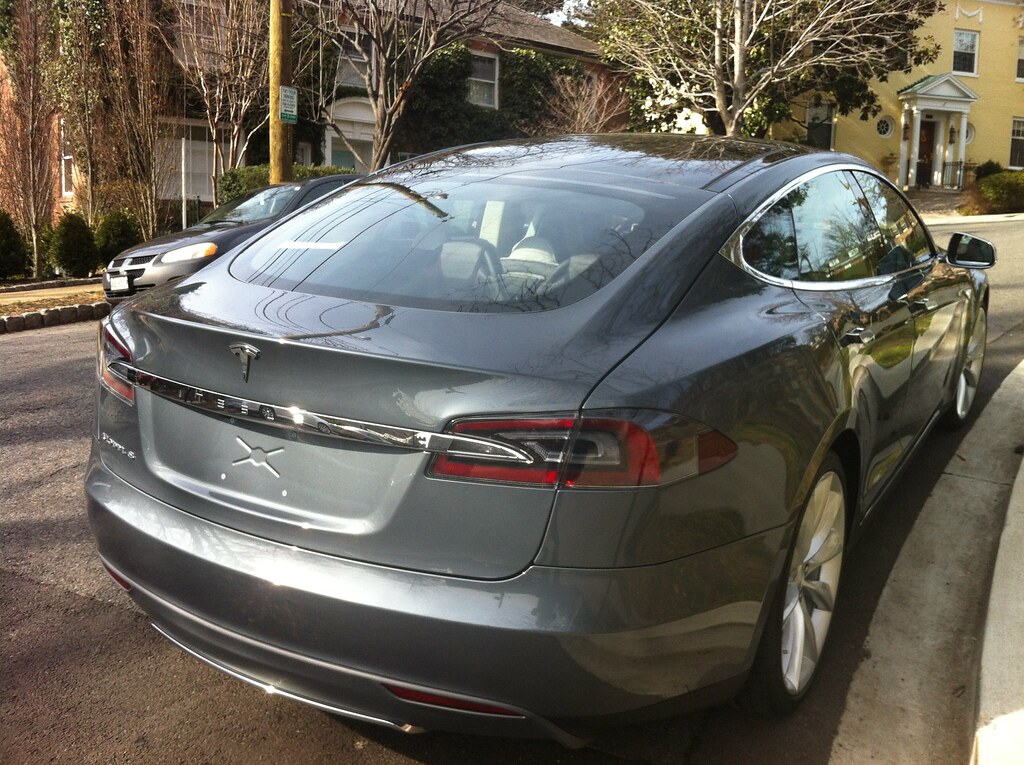
If countries are going to adopt electric cars as their future mode of transport, infrastructure will need to become considerably more built-out to accommodate the growing number of electric vehicles on the road. Biden has pledged to build 500,000 new plugs over the next ten years, which some have said is a tall order.
So how would this concept of wireless charging work? According to the researchers at Cornell, special metal plates would be embedded into the road which would be connected to a powerline and a high-frequency inverter. The plates would create alternating electric fields to attract and repel a pair of matching plates attached to the bottom of the electric vehicle.
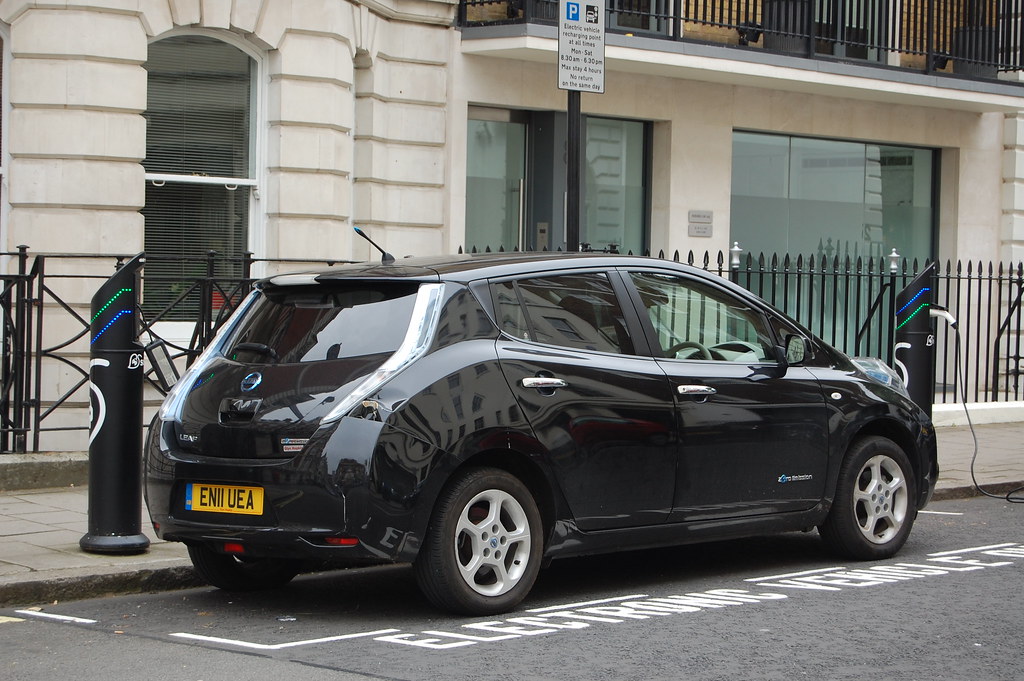
The charging process that has been developed by the team currently takes approximately 4-5 hours to reach full charge on a smaller car like a Nissan Leaf, and even longer for a larger vehicle. However, even with the progress in this area of research, installation and commercial deployment of the necessary infrastructure on U.S. roads would be no mean feat.
It is apparent that while charging electric cars continues to be a challenge that there are plenty of other technologies that are being explored to try to address this. While regenerative braking does function to put some energy back into the battery, it is unfortunately not enough to power the car entirely.
Harnessing solar power does hold possibilities and there are some electric cars available commercially today. Looking at making the infrastructure more accessible is also going to play an important role. It is clear technologies will continue to be tested, developed, and deployed to tackle this challenge.
